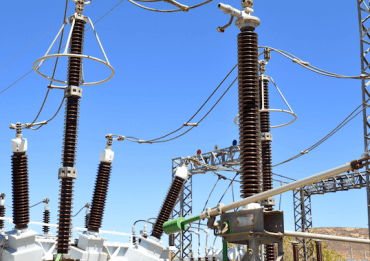

SURGE ARRESTORS TESTING

Voltage surges can enormously damage electrical systems and sensitive equipment that are central to our daily lives. That’s why safeguarding them from such surges is essential in today’s globalised world. Voltage surges, sparked by lightning strikes or another transient event, can cause severe destruction to electronic equipment. To mitigate these issues, surge arrestors are employed to prevent excessive damage, downtime and safety issues.
Choosing the right surge arrestor is essential for protecting our electrical infrastructure and equipment. To make an informed choice, it is important to understand the different kinds of surge arrestors available, as each one has been designed to handle specific scenarios and cater to distinct applications.
This article aims to uncover the world of surge arrestors and analyse various types in terms of their characteristics and applications, including Road Gap Arresters, Sphere Gap Arrester, Horn Gap Arrester, Multiple-Gap Arrester, Impulse Protective Gap, Electrolytic Arrester, Expulsion Type Lightning Arrester, and Valve Type Lightning Arresters.
Surge Arrester Types
What Is Surge Arrester
Surge Arresters, popularly known as Lightning Arresters or Surge Protectors, are meant to safeguard electrical systems and equipment when voltage surges happen due to lightning strikes or any other transient voltage instability. In the event of a surge, an arrester directs the additional electricity away from vulnerable components, safeguarding the system and avoiding destruction. This helps maintain safety and security.
Voltage spikes can be detrimental to power distribution systems, telecommunication networks, and electronic devices- surge arresters provide a layer of protection against them. These handy components are becoming increasingly popular to ensure the safety and reliability of these systems.
Know the various types of lightning arresters:
Road Gap Arrester: A special type of lightning arrester uses a set of spark gaps arranged in a particular pattern to guard against lightning strikes. This low-impedance path allows the lightning current to pass safely into the ground, providing effective protection.
Sphere Gap Arrester: An arrester with two close-by spheres is a reliable protection system against lightning surges. Due to the breakdown of air between them when a surge occurs, it provides an effective passage for current, thereby safeguarding the electrical system.
Horn Gap Arrester: This protective device utilises horn-shaped conductors to create an electrical spark gap. These horns help spread the voltage evenly and safely direct the lightning wave towards the ground, ultimately safeguarding your equipment from harm.
Multiple-Gap Arrester: Lightning arresters with multiple spark gaps in series are frequently used for better protection from surges. This arrangement helps reduce the voltage across the arrester, providing enhanced protection against extreme energy lightning strikes.
Impulse Protective Gap: The protective impulse gap is designed to divert and absorb high-voltage surges caused by lightning strikes. It can handle vast amounts of electrical energy without causing any damage to the system’s components.
Electrolytic Arrester: This arrester is designed to protect equipment from lightning surges. It features an electrolyte-filled chamber with good conductivity during normal conditions, yet its resistance rapidly increases when a surge happens, thus safeguarding the system.
Expulsion Type Lightning Arrester: This surge arrester functions through a valve, which opens during an electrical surge and releases the lightning energy. This ensures a reliable and prompt reaction to lightning strikes, thus transferring the current away from vulnerable devices.
Valve Type Lightning Arresters: Surge arresters have a valve element to regulate the current during an electrical surge. Generally, the valve is kept closed except when a surge happens, allowing the energy to be released without harming any equipment.
Conclusion:
Voltage surges can wreak havoc on our electrical systems and delicate equipment. Surge arrestors are essential in minimising these hazards and preventing any potential damage. Our exploration of the different surge arrest types has given us great knowledge regarding the various options to protect our investments.
It's important to understand the different types of Road Gap and Valve Type Lightning Arresters available regarding surge protection. Each product provides unique features and benefits suited for various applications and situations. Knowing about these options enables us to make more enlightened decisions in this area.
FAQs:
Q1: Why is surge arrester testing important?
Testing of surge arresters is critical to guarantee the dependability and performance of the arrester in defending electrical systems against lightning strikes. It can identify any mistakes, diminishments, or malfunctions of the arrester and make it feasible for timely upkeep or substitution..
Q2: How often should surge arrestors be tested?
Surge arresters should be tested on a regular basis to guarantee optimal performance and safety. The exact frequency of the testing depends on factors such as arrester type, operating conditions, and industry regulations, but it usually ranges from once every 1-5 years.
Q3: What happens during surge arrester testing?
Surge arrester testing is an important measure for evaluating its efficiency and performance. It involves various tests like measuring insulation resistance, capacitance, energy-handling capabilities, and response time, which can help identify any issues affecting its condition. Plus, it includes diagnostics and analysis to check the exact status of the arrester.
